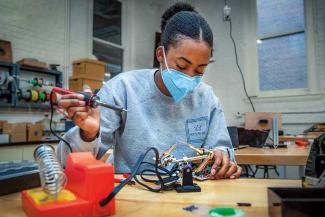True or False? Engineering studies and research at Tulane ended after Hurricane Katrina.
The answer is false. In fact, nothing could be further from the truth. Tulane is more invested and focused on engineering than ever before as we build a model program for the 21st and 22nd centuries. Such a program combines engineering with disciplines throughout the university, including architecture, the biosciences, medicine, environmental studies, computer science and more.
Name a challenge, a threat or an opportunity to improve life and it is likely a Tulane engineer is addressing it — and teaching the next generation to do the same. Engineering at Tulane is breathtaking in its scale. It seeks to improve health care through biomedical engineering. It makes discoveries on the smallest level through nanotechnology, and it focuses on the waters of the world through the Delta and River Urbanism platform, the Department of River-Coastal Science and Engineering, the ByWater Institute and others.































































